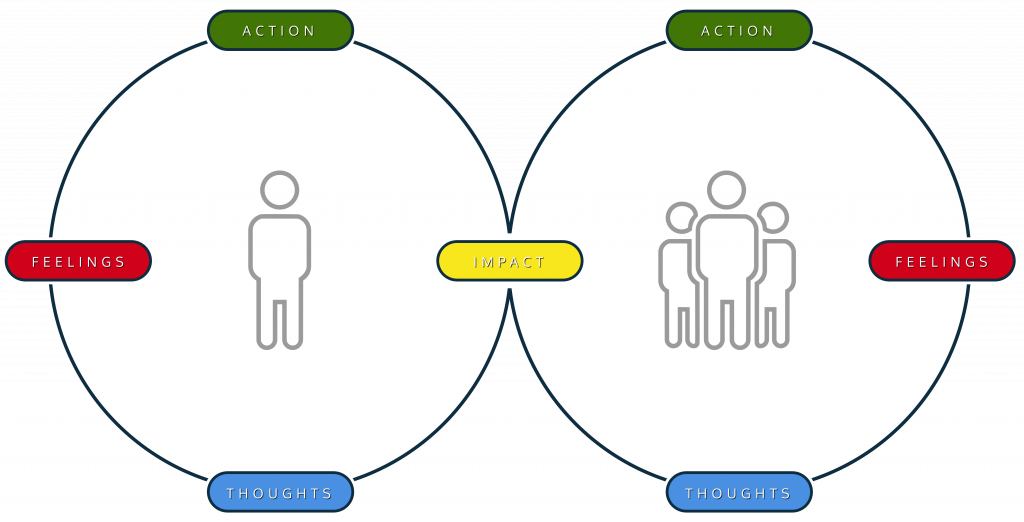How to Give High-Quality Feedback
The Problem with Feedback
As a coach training provider, our students tells us that feedback is hard. It seems to be one of those areas fraught with difficulty and as a result of that people shy away from both the giving and the receiving of feedback.
This is often because we have received poorly constructed feedback in the past. Most of our students can easily find examples of times when feedback was given to them in a way that was unhelpful and felt like a criticism.
We may have been taught tools to help us with the process of giving feedback, however those tools often don’t give us language that is useful and they focus more on the order in which we should give feedback. When we know someone is using those tools with us, we often miss hearing the positives because we are waiting for the developmental news that we know is coming next!
On the other hand, some people also don’t like to give feedback to others and they steer away from sharing feedback that they worry would hurt others. This takes away the other persons opportunity to grow and improve.
Even positive feedback can be badly delivered. If we don’t qualify what was good about what they did and the impact this had, then the receiver doesn’t have the information they need to repeat that behaviour.
As a coach, it is important that we learn to give high-quality feedback to our coachees that helps them to open up to that which they are not seeing.
Ultimately, feedback is relational and as a result, the giving – and receiving – of feedback can feel vulnerable.
It can be useful to focus on the intention of why we are giving feedback. When we give feedback the aim should be to help people recognise what they are doing that has a positive impact on others and that which has an unwanted impact. Through this new awareness they can then make choices about what they want to continue or what changes they would like to make. If our intention is positive and we focus on helping the other person to develop, we can give feedback that will be useful and that lands well.
What Does High-Quality Feedback Look Like
When we deliver feedback well and have a positive intention, our feedback has a positive impact on the actions and impact of the person receiving, regardless of whether it is positive or constructive in nature.
Here are some tips that will help you to deliver high-quality feedback in any setting:
- Ask Permission before giving feedback
- Give them the opportunity to know what is coming and to prepare
- This also allows them to ask to receive at a different place or time
- Give it as early as you can - and even immediately if possible to do so.
- This helps them to link the feedback to the specific actions
- Make sure that your feedback is helpful and forward focused
- Ask yourself why you want to give feedback
- What would happen if you don’t give it?
- Keep feedback “neutral” where possible without assuming their intent
- Ask a question
- Eg What are your thoughts? What would you like to do with this? How does this land for you?
- Give them space to respond and listen to them
A Model to Deliver High-Quality Feedback
As part of our coach training development, we have developed a feedback tool that helps to put what you have learned about feedback into practice.
The NPA Feedback Model is based upon our North Point Meta-Model which tells us that we all have an internal world and an external world. We can all see the external world which makes up our actions and impact, however while we can know our own internal world, we cannot know other’s thoughts and feelings - and other people cannot know our thoughts and feelings.

The NPA Feedback Model
- Request permission to give feedback
- Ask “May I give you some feedback?”
- Share the observed actions (being careful to avoid interpreting) first and then the impact that those actions had on you (which is your thoughts and feelings)
- Ask them for their perspective
- Eg What was the impact of my feedback on you? How does that land for you?
- Enquire about any future desired impact and required action
- Eg What will you do with this? How can I support you?
The power of feedback comes from the other person understanding the impact that their actions are having on others and they cannot know this unless you share. This means that if we wish to deliver high-quality feedback that lands well, we need to describe the actions – which you both can know – and then share the impact it had on us, which is our own thoughts and feelings.
To complete the feedback, we now give the other person space to respond and to decide how or what they would like to do with that feedback.
This model has positively changed the way our students give feedback and the way they feel about giving feedback. Now it's your turn!
- Where has feedback worked really well for you?
- Where have you “failed” in your feedback style?
- How do you feel about receiving feedback?
- How has the NPA Feedback Model impacted you?
We would love to hear how the NPA Feedback Model impacted you. Please respond and let us know your thoughts.
To learn more about using our feedback model and other topics related to our coaching methodology, you can join us on our FREE 5 day experience "Tools of Transformation"